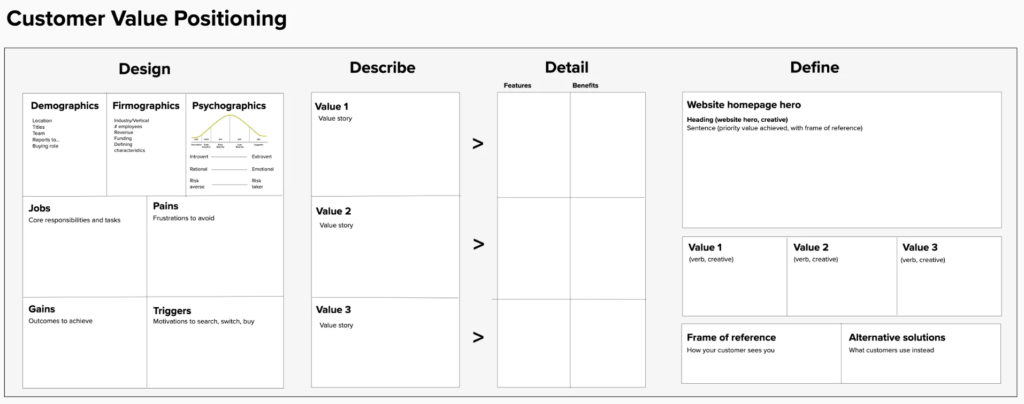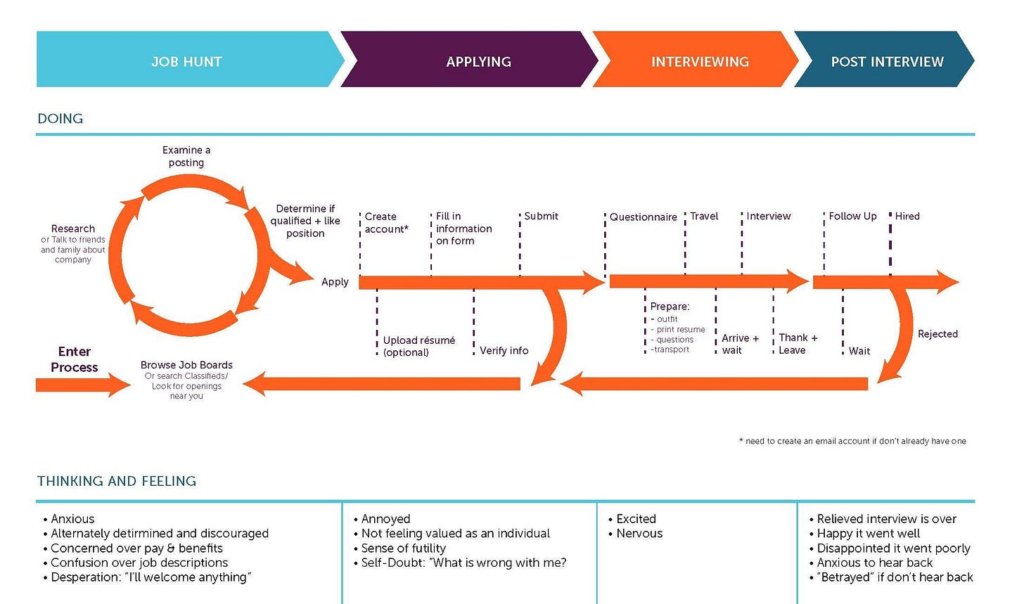Hey there. This is The Overview, a weekly roundup of noteworthy B2B SaaS stuff. You’ll find interesting thoughts, articles, and more from around the internet.
I’m away this weekend in Berlin, drinking mulled wine and eating bratwurst at the Christmas markets! Enjoy a roundup of the top four most popular Building Momentum content from the last two years.
In this post:
My Customer Value Positioning framework

The literal definition of positioning is “to occupy a space in the customer’s mind,”… but how are we going to position effectively if we don’t understand what’s going on in their head?
With my Customer Value Positioning (CVP) franework, you’ll:
- Define the perfect website heading and slogan that resonates
- Detail exactly how your product helps your customer achieve their goals
- Describe the top three outcomes your customers desire
- Design a fluff-free persona that aligns your sales, marketing, and product teams
Why you need a job-to-be-done map

A job map is a single document that details the steps your customers go through to ‘hire’ a product for a ‘job’ they need to do. I think every business needs one job map per customer persona, per product.
By breaking down their process to find, complete, and review their job, we can improve our understanding of the customer – and optimize our product, marketing, and sales to better meet their needs.
Craft strong messaging with ‘value nuggets’

A value nugget is a way to package up your product features and benefits, while providing a clear hierarchy to navigate effortlessly in sales conversations and marketing
A value nugget is comprised of:
- A value: an attribute or state that the buyer hopes to attain. Examples might be “hire future leaders, faster”, “deliver repeatable results”, “workforce flexibility”, or “visibility into their processes”.
- One or more benefits: the advantage a buyer gets when using your product. It’s tangible – something they can report on, and starts with a verb. Examples might be ‘save time’, ‘increase customer satisfaction’, or ‘maximize time-to-value’.
- Benefits are gained via features: a specific piece of functionality that’s used by your customer. These might be an obvious product capability like an integration, a less obvious consideration like a modern and clean UX, or even service elements like a dedicated account manager.
- Proof points: stats or testimonials that can be highlighted to provide social proof, additional context, and evidence that it works.
Your one-pager is probably useless
Does any of this sound familiar?
- “We need to send a one-pager!”
- “The customer requested an overview deck before we meet.”
- “They asked us to send some information over to see if they’re interested… what do we have?”
A PDF is thrown together with a few days delay whilst it’s designed in the brand colors. Or a custom Frankenstein deck is created from the other relics that clog up the Google Drive shared folder.
In an alternative world, sales collateral comes from a solid understanding of your buyer’s journey – which comes from a solid understanding of who your ICP is and what’s going on for all your personas.
Thanks for reading! Let me know what you thought – find me on Twitter and LinkedIn.
P.S. If you’ve found value in Building Momentum, could you buy me a coffee? Here’s my tip jar – any support is gratefully appreciated!
P.P.S: If you enjoyed this post, will you share Building Momentum with your network?




